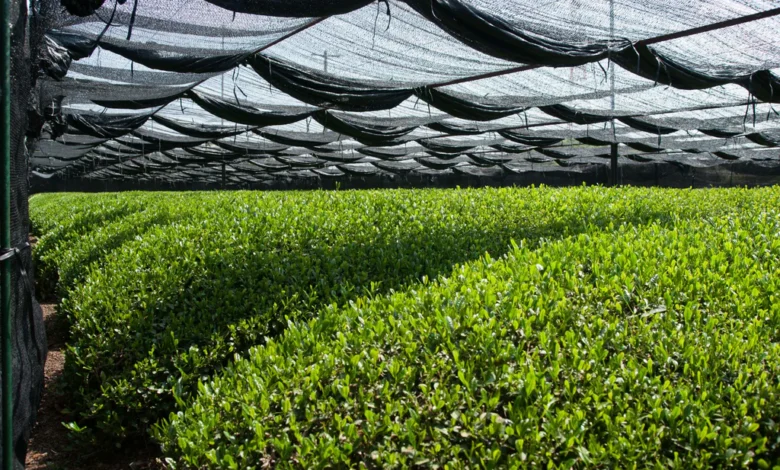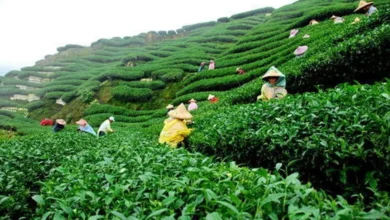How to Start Matcha Farming in India: A Beginner’s Guide

Introduction
As a farmer who has worked with traditional crops for years, I was curious when I first heard about matcha. At first, I thought, “Isn’t it just green tea?” But after some research, I realized matcha is different – not only in how it’s grown but also in how valuable it can be. This article is a complete beginner’s guide to starting matcha farming in India, written from my experience and research. If you’re a farmer looking for a high-value crop or someone who wants to grow organically and mindfully, read on.
What is Matcha and Why Is It So Popular?
Matcha is a type of green tea, but it’s not just any tea. It is made from shade-grown tea leaves that are carefully harvested, steamed, dried, and ground into a fine powder. Unlike regular green tea, where you steep the leaves and discard them, with matcha you consume the entire leaf – which means more nutrients and antioxidants.
People around the world, especially in the USA, Japan, and Europe, are now choosing matcha for its health benefits, energy boost, and calming effects. This rising demand has made matcha a high-value crop, and India’s climate in certain regions is perfect for growing it.
Matcha vs. Green Tea: What’s the Difference?
| Feature | Green Tea | Matcha |
|---|---|---|
| Growing Condition | Full sunlight | Shade-grown (20-30 days) |
| Processing Method | Dried and rolled | Steamed and stone-ground |
| Consumption | Brewed, then discarded | Whole leaf powder consumed |
| Nutrient Content | Moderate | Very high |
| Market Price (avg) | ₹1,000-2,500/kg | ₹3,500-20,000/kg |
Is Matcha Farming Suitable for India?
Yes, absolutely. Matcha comes from the same plant as green tea – Camellia sinensis – which is already grown in places like Assam, Nilgiris, and Himachal Pradesh. These areas have the right climate: cool temperatures, some rainfall, and good elevation.
Ideal Conditions:
- Altitude: 1,000 to 2,000 meters above sea level
- Soil: Slightly acidic, well-drained, rich in organic matter
- Climate: Cool, misty, and humid
- Shade: 20 to 30 days of shading before harvest (crucial for matcha quality)
If you’re already growing green tea, switching to matcha is not difficult. You just need to adopt some new techniques like shade-growing and special grinding.
Step-by-Step Guide to Start Matcha Farming
1. Choose the Right Variety
Use high-quality Camellia sinensis varieties known for matcha, such as Yabukita. If you’re starting new, get saplings from a certified organic nursery.
2. Prepare the Soil
Matcha needs rich, loose, slightly acidic soil. Use compost, cow dung, and green manure to enrich the land organically.
3. Planting
- Plant during the monsoon season
- Maintain spacing of 3×3 feet
- Install basic drip irrigation if possible
4. Shade-Growing (The Matcha Secret)
20-30 days before harvest, cover the tea plants with black netting or bamboo shades. This reduces sunlight and boosts chlorophyll, giving matcha its vibrant green color and higher nutrition.
5. Harvesting
- Harvest only the top two leaves and a bud
- Do this by hand for quality control
- Best time: March to May (depending on region)
6. Processing into Matcha
- Steam the leaves quickly after harvest
- Dry them using slow air drying (avoid roasting)
- De-vein and de-stem the leaves
- Stone-grind them into fine powder
Traditional granite grinding is best but slow. Machines can also be used for higher volumes.
Cost and Profit Analysis (Per Acre)
| Item | Approximate Cost (INR) |
|---|---|
| Saplings + Soil Prep | ₹80,000 – ₹1,00,000 |
| Shade Net Setup | ₹60,000 – ₹80,000 |
| Irrigation | ₹30,000 – ₹50,000 |
| Organic Inputs | ₹20,000/year |
| Labor (Harvest + Care) | ₹40,000/year |
| Total Cost (Year 1) | ₹2.5 – 3 Lakhs |
Expected Yield: 300-500 kg/acre (premium matcha)
Market Price: ₹3,500 – ₹20,000 per kg depending on grade
Gross Income: ₹10-15 Lakhs/year possible
Where to Sell Matcha?
- Export Markets: Japan, USA, Europe
- Domestic: Organic stores, wellness cafes, e-commerce platforms
- Direct to Consumer: Instagram, Shopify, Amazon India
Start small with samples, and build trust with buyers through quality.
Challenges to Keep in Mind
- Shading is essential – poor shading = bad quality matcha
- Grinding equipment is expensive (look for cooperatives)
- Education is needed – both for you and your buyers
- Organic certification takes time but adds trust
FAQs
Q1: Is matcha farming organic by default?
No, but it’s highly recommended. Use compost, cow dung, neem oil, etc., for best results and market value.
Q2: Can small farmers start matcha farming?
Yes. Even half an acre can give good returns if done right. Start small, learn, and scale.
Q3: How is matcha different from regular green tea powder?
Matcha is grown under shade and stone-ground into fine powder. Regular green tea is not.
Conclusion: Why Matcha is a Mindful Crop
Matcha farming is not just profitable – it’s a practice in patience, care, and precision. Every step, from planting to grinding, demands awareness. But the reward is high – both in terms of income and contribution to health.
If you’re a farmer looking to grow differently, or someone who wants to live closer to nature while earning well, matcha might be your answer.
Grow organic. Grow mindfully. And stay fully aware.




